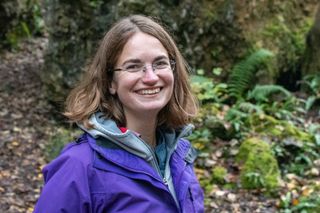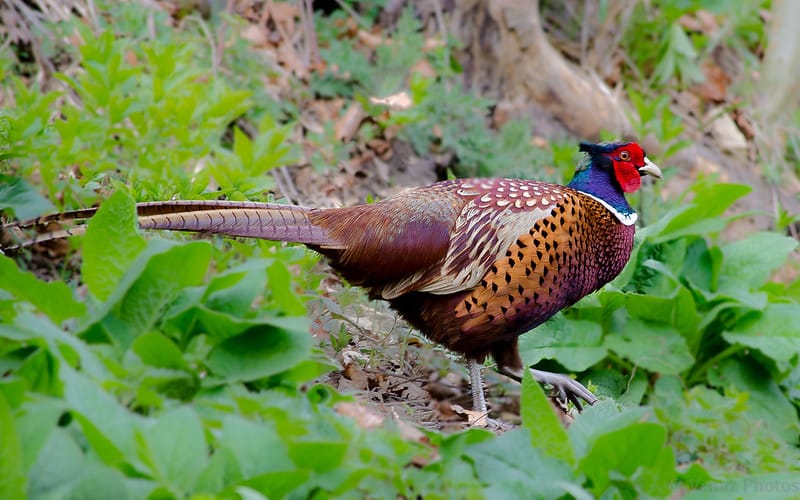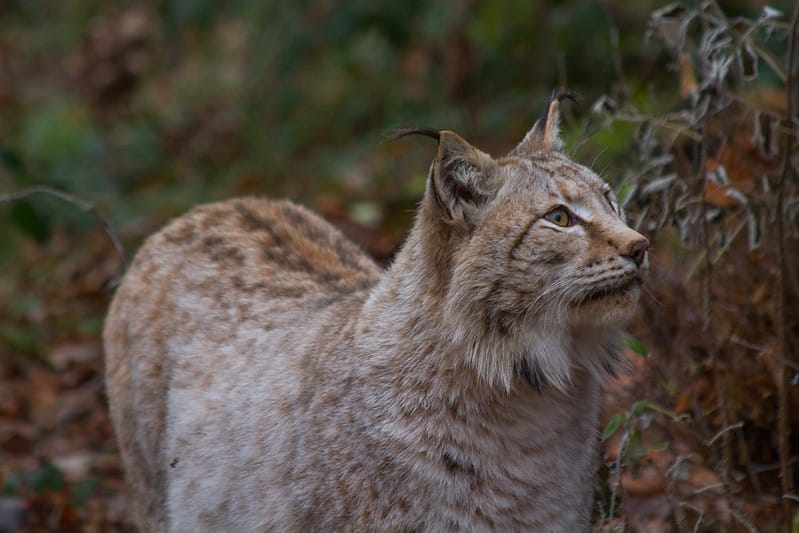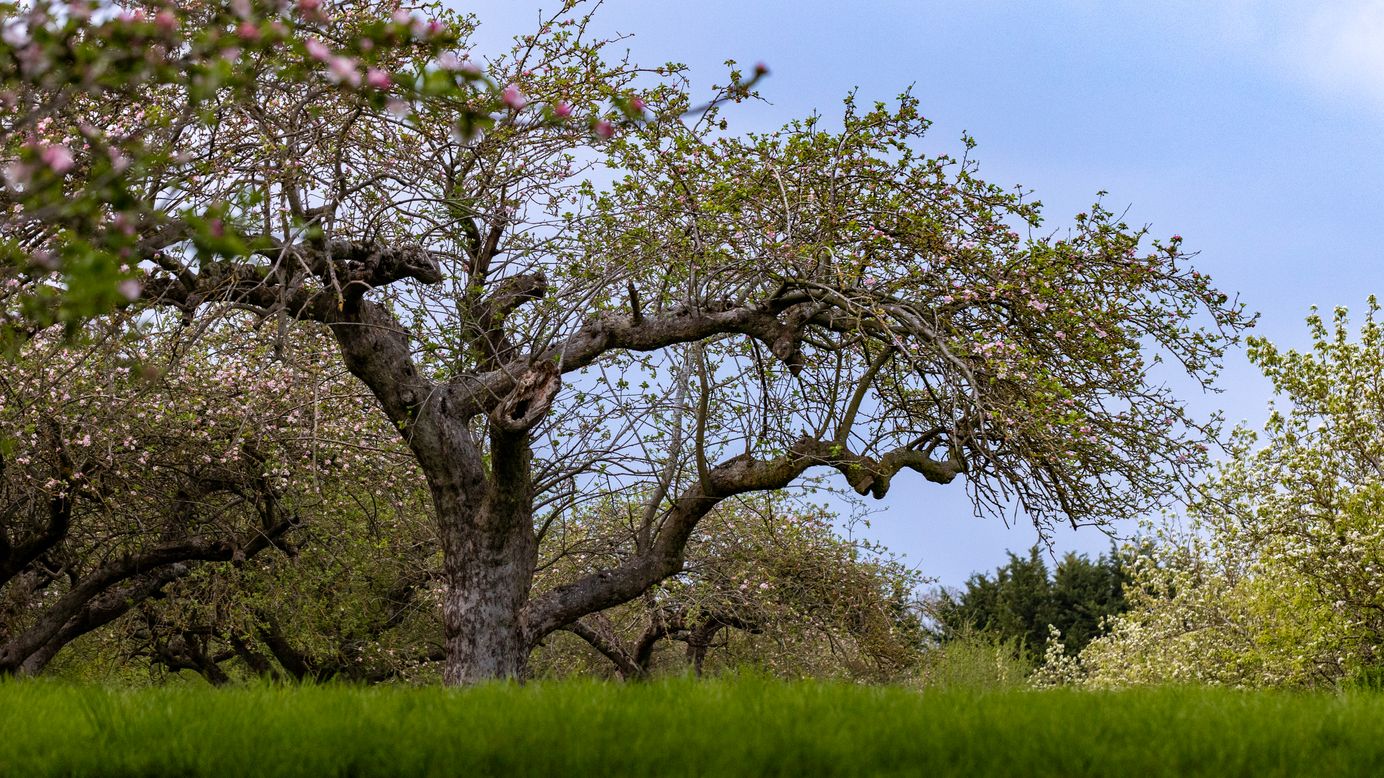
The fight is on to save Coton Orchard
But why was the destruction of a declining habitat, rich in rare species, approved in the first place?
Defenders of Coton Orchard often describe it as an ancient place, which it isn't – at least not in the usual sense of the word.
The original fruit trees were planted in 1922, meaning its oldest specimens are just over one century old. Compared to a 500-year-old oak, or a millennia-old yew, that may seem relatively unimpressive. But to focus on the date is to miss the point. Trees do not experience time as humans do.
Apple trees age fast and die young, a feature known as ‘early senescence’. After just a few decades, they begin to wear the signs of great age.
At just sixty years old, when an oak would still be considered a young tree, an apple may have a hollowed trunk, rot holes and dead wood – features that sustain an array of wildlife, including beetles, bats and owls. In England, trees are rarely allowed to reach the end of their natural lives. Signs of decay are quickly tidied away, leading to a dearth of such features in the landscape.
Therein lies the value of places like Coton Orchard. Ostensibly a commercial venture, orchards provide a wellspring of death that, ironically, is crucial to life.
Which is one reason why Anna Gazeley is frustrated that Cambridgeshire County Council has approved a busway through the centre of hers.
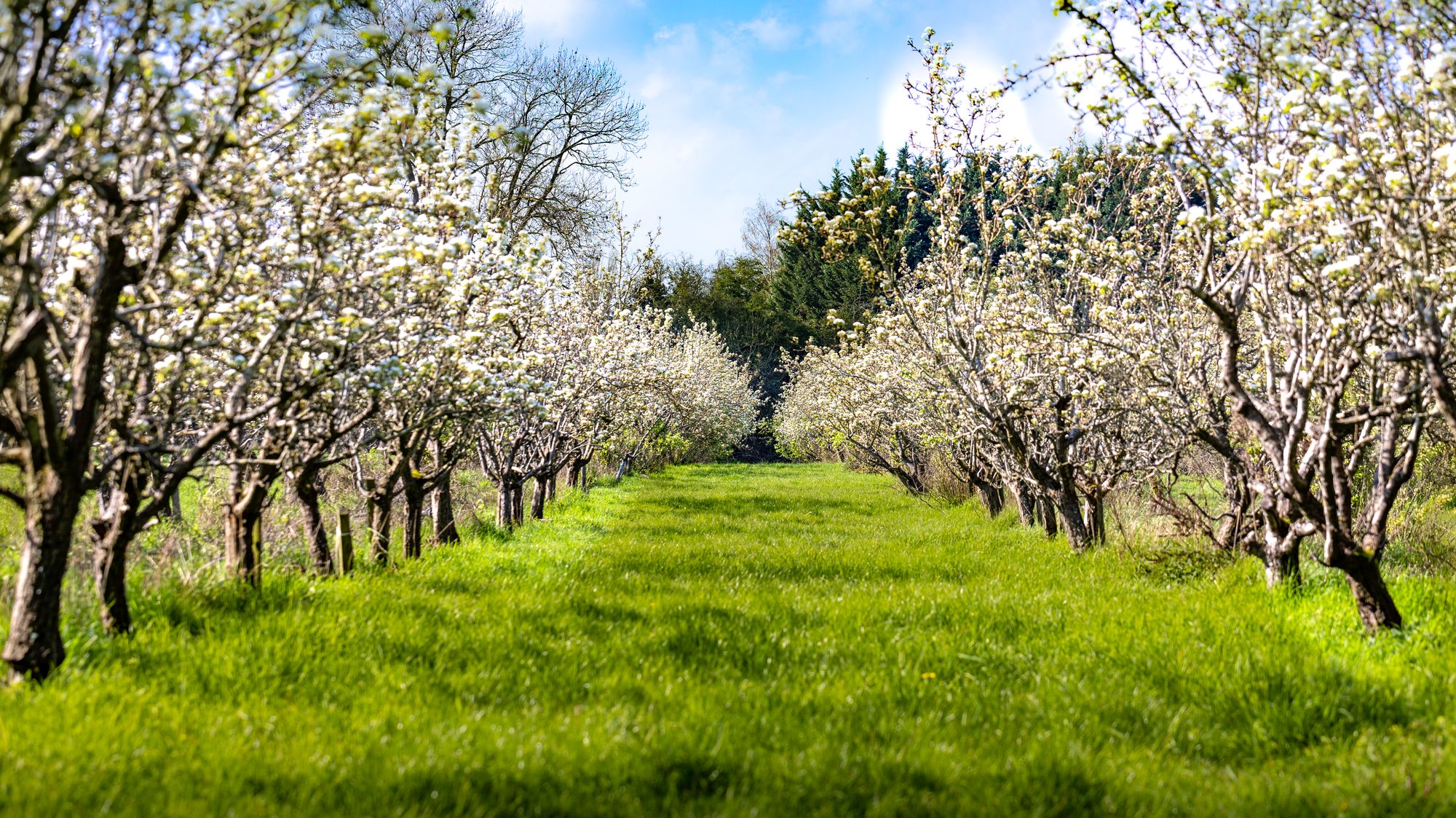
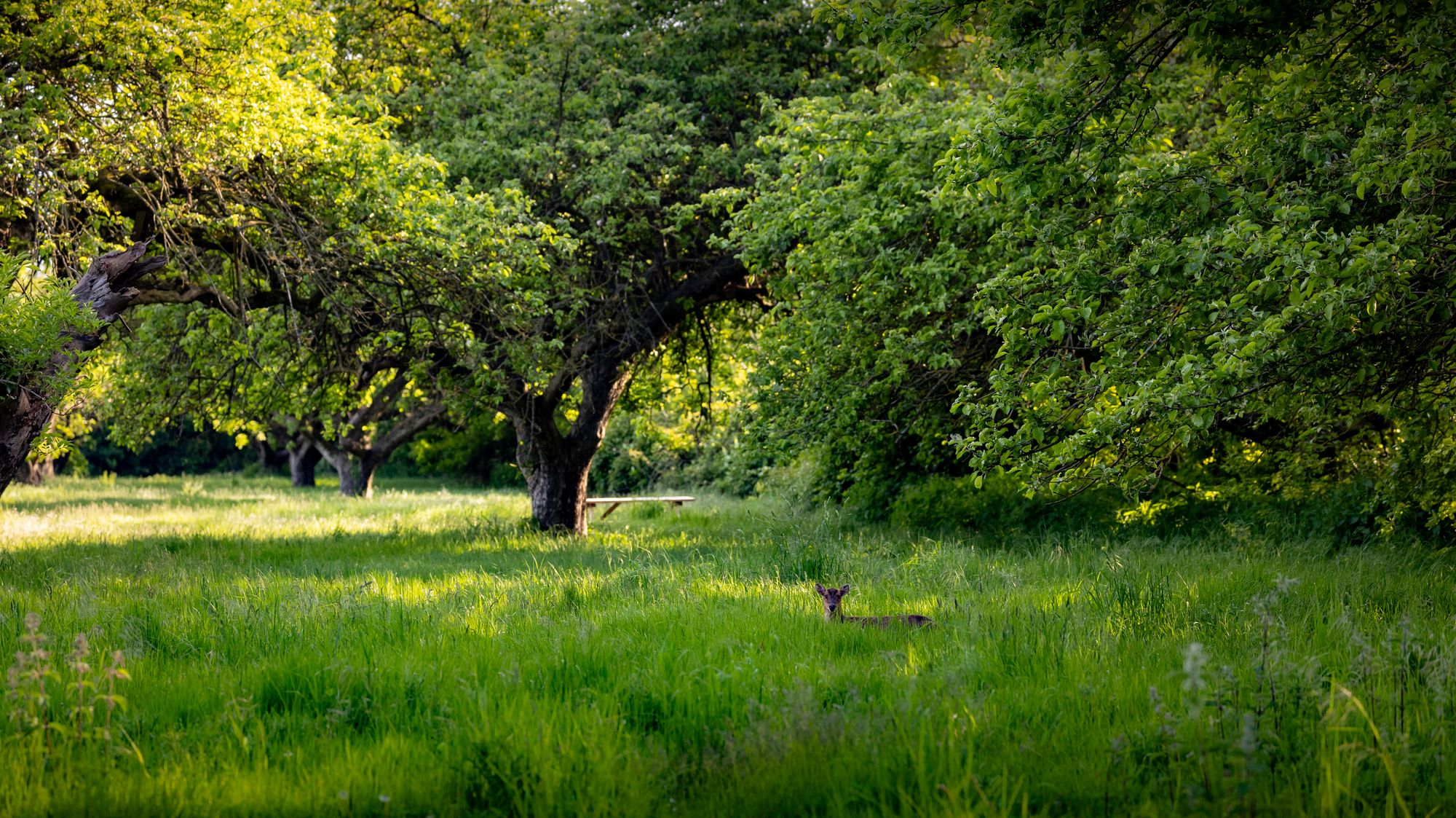
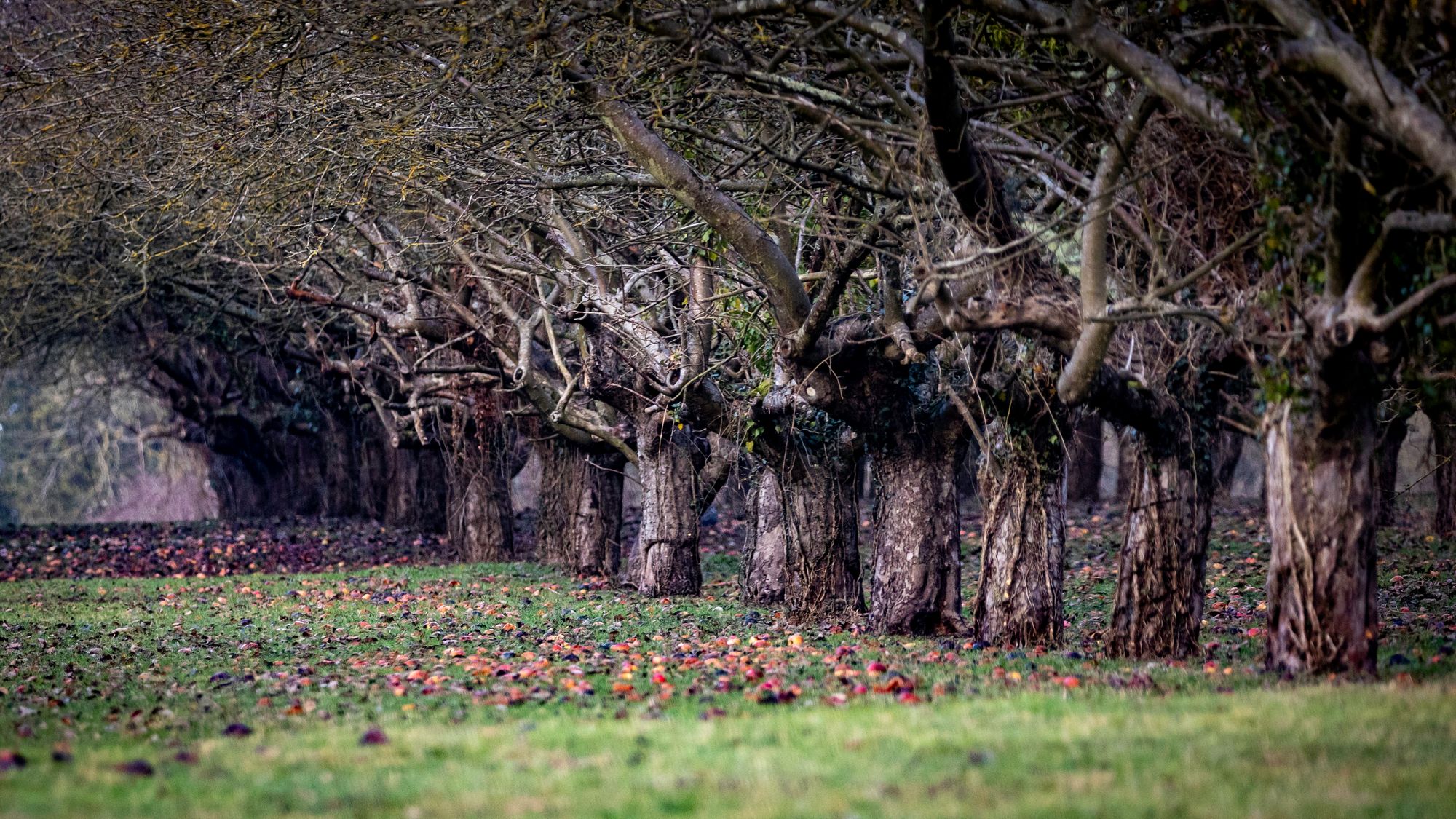
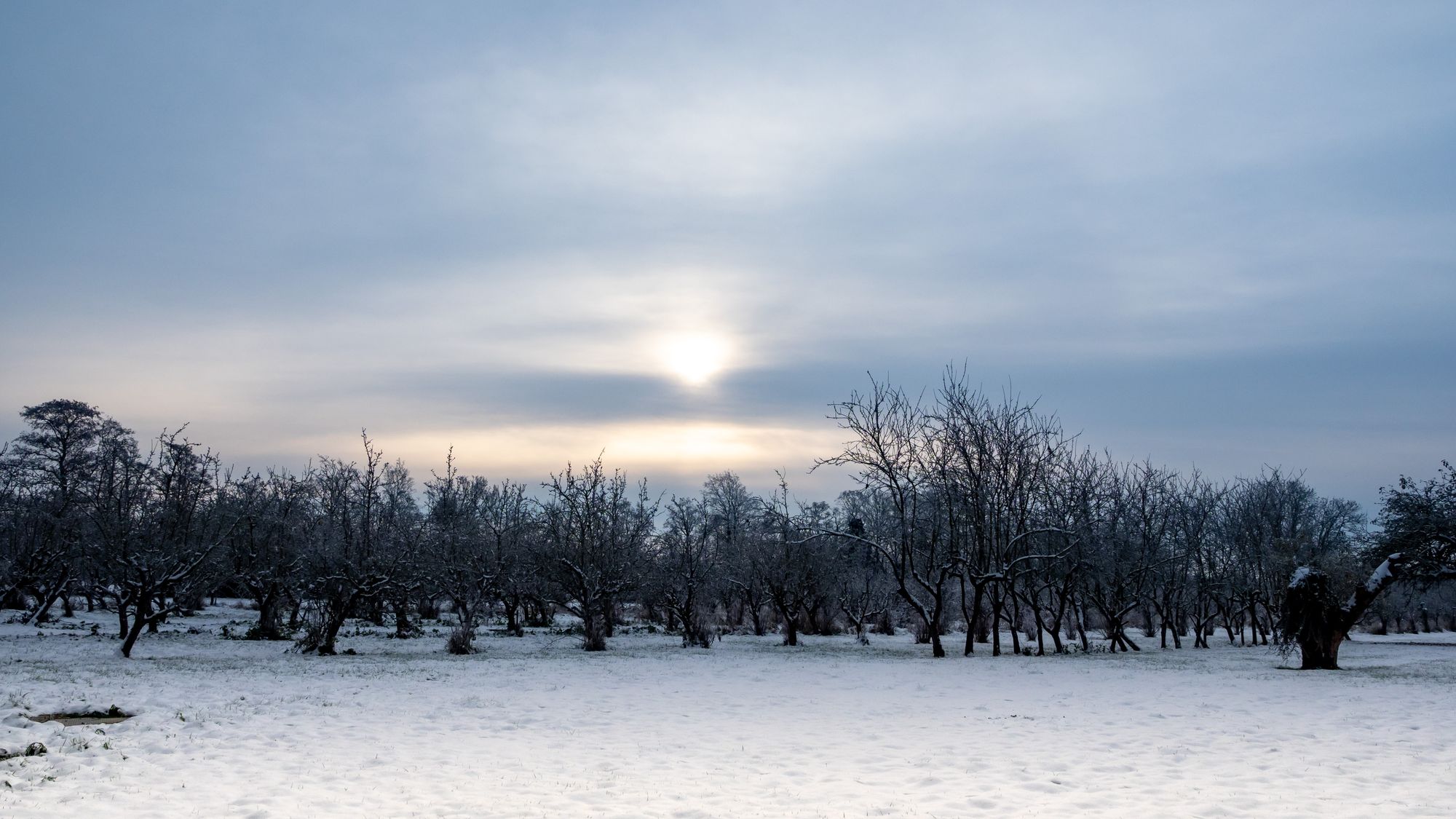
Anna’s family has owned Coton Orchard for almost thirty years. Her father, Albert, bought the site in 1996 – a small business to complement his work as an antiques restorer and watchmaker.
Back then, farmers could still earn government subsidies by grubbing up the apple trees in their orchards – a piece of state-sponsored vandalism that ruined many similar sites across the country. Around 90 percent of traditional orchards have been lost since the 1950s, due to neglect, development or intensive modern fruit production.
But, for Albert, orchard ownership wasn’t primarily a money-making venture. A Londoner by birth, he had been evacuated to Cambridge during the war, and he fondly remembered spending his childhood days in other local orchards. He saw Coton as an opportunity to preserve a small piece of that history. Instead of cutting down the apples trees, he used the harvest to make juices from old wooden presses, selling it in glass bottles with watercolour labels.
Anna, who has now taken over the management of the orchard from her father, is equally committed to keeping the orchard intact. This time, however, the family may have no choice in the matter. Coton’s apple trees are on the brink of being removed not through financial temptation but by force.
A new busway linking Cambourne to Cambridge was first proposed in 2014, as part of a government-backed scheme to improve public transport in the city.
Various routes were proposed for the road. The one that was eventually picked cuts directly through the heart of the orchard. The official estimate is that around five hundred trees will have to be cut down to make way for the road, although Anna believes that the true tally may be more than twice that.
The developers behind the proposal, the Greater Cambridge Partnership, say there are are no reasonable alternatives – that the city needs better public transport to tackle the climate emergency, and that, by slicing the orchard in two, they avoid harming the nearby ancient woodland. Campaigners are unconvinced, arguing that the developer's goals could be achieved by extending the existing road.
Despite widespread objections to the proposal, in March the county council voted in favour of an application for a Transport and Works Act Order. Pending a likely public enquiry, the orchard’s hundred-year history could soon be brought to an ignominious end.
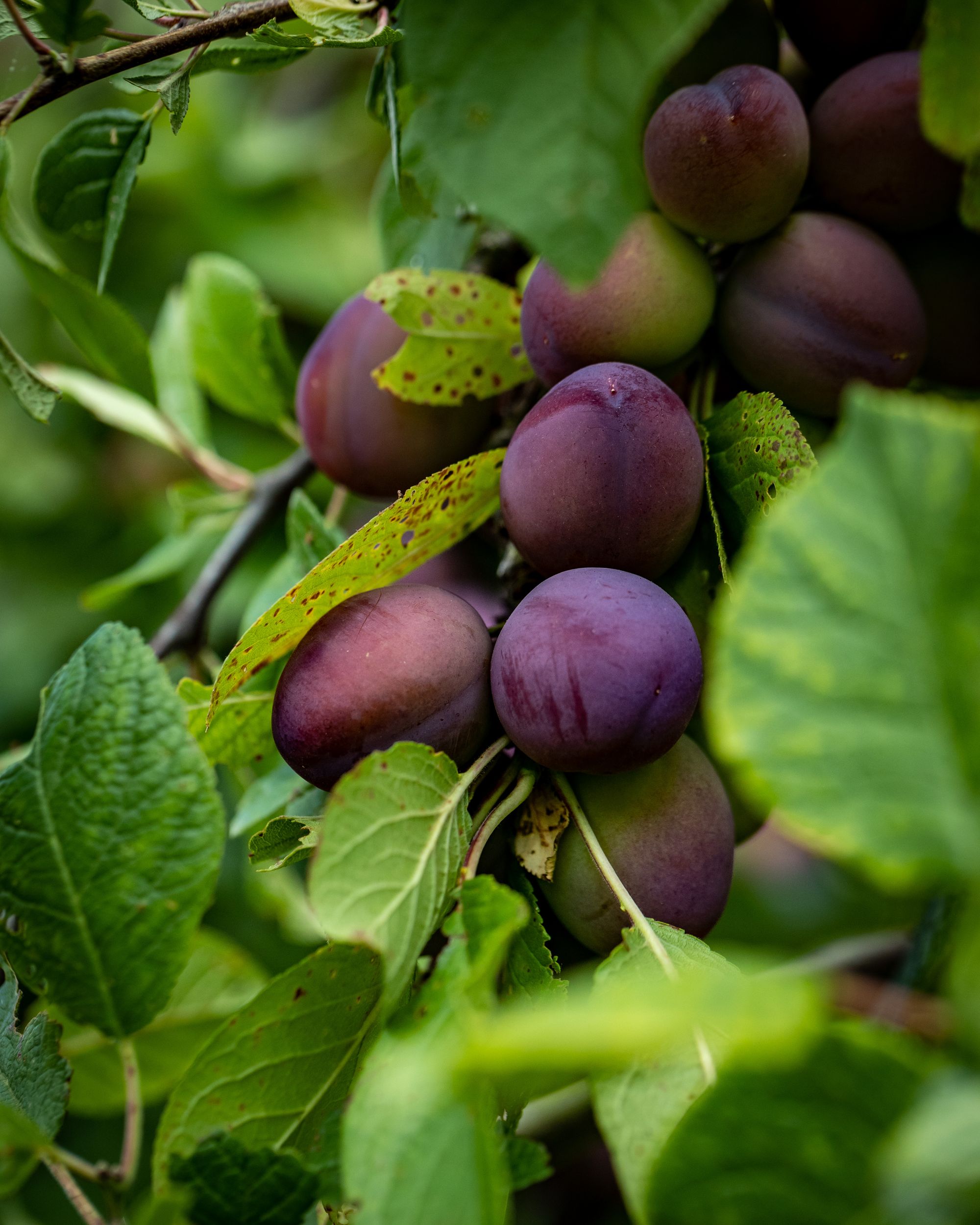
The jewels in the crown of Coton Orchard are its eleven Bramley apple trees, planted when the orchard was first established and now around a century old. Their trunks have hollowed with age, some ringed by bracket fungi, though they still have a few decades left to live. Alongside these giants are hundreds of smaller trees, producing 26 varieties of apples as well as plums and pears.
Even the draft environmental impact assessment for the busway, published in March, admits that Coton Orchard is a hotspot of biodiversity.
The orchard supports more than two hundred invertebrate species, of which 14 are considered nationally scarce, including eight beetles, two bees and four moths. Bats make regular use of the hedgerows at the boundaries.
Independent experts have made their own assessments. Dr Christopher Preston, a bryologist at the UK Centre for Ecology & Hydrology, recorded 45 species of mosses and liverworts – including Common Tamarisk-moss, which is usually restricted to ancient woodland – and believes that more would be discovered upon closer inspection.
For Anna, the battle is personal. While another landowner might have happily taken the cash, she is desperate to save the land that her family has nurtured for so long. Her passion for the wildlife that her orchard supports is self-evident.
“Orcharding doesn’t require ploughing, so the soil is undisturbed: it is full of bacteria, mycorrhizal fungi and insects. We’ve got all three species of woodpecker and three pairs of foxes," she says.
“For the last couple of years, we have just let the apples fall. We had this carpet of apples, and this giant flock of birds – it must have been five hundred redwing and another five hundred fieldfare – descended into the trees for a week and ate the whole lot. It was a bit scary. And these are red-listed birds.
“All these rare species that, if you plough a bus through, will all be gone.”
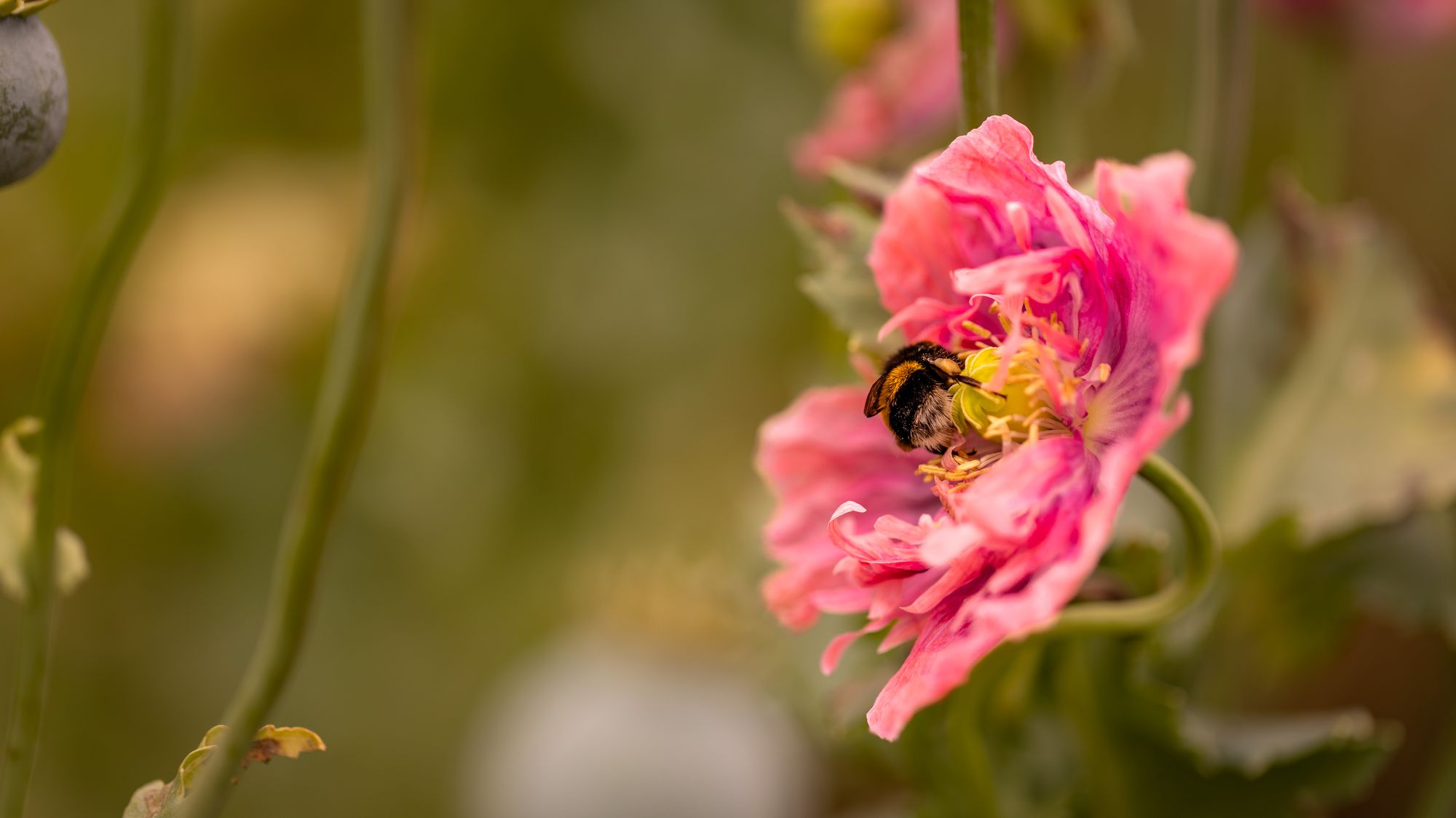
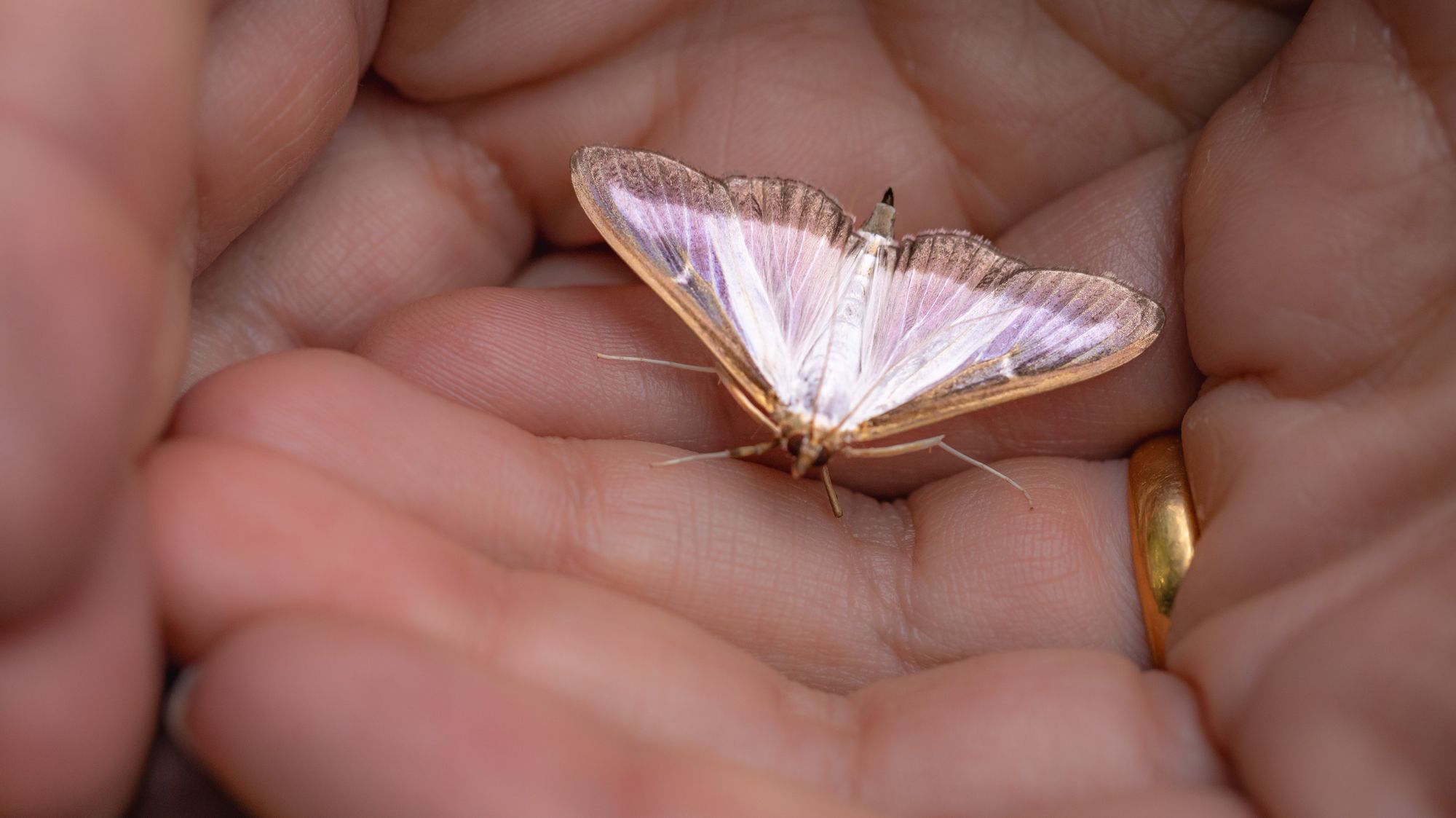
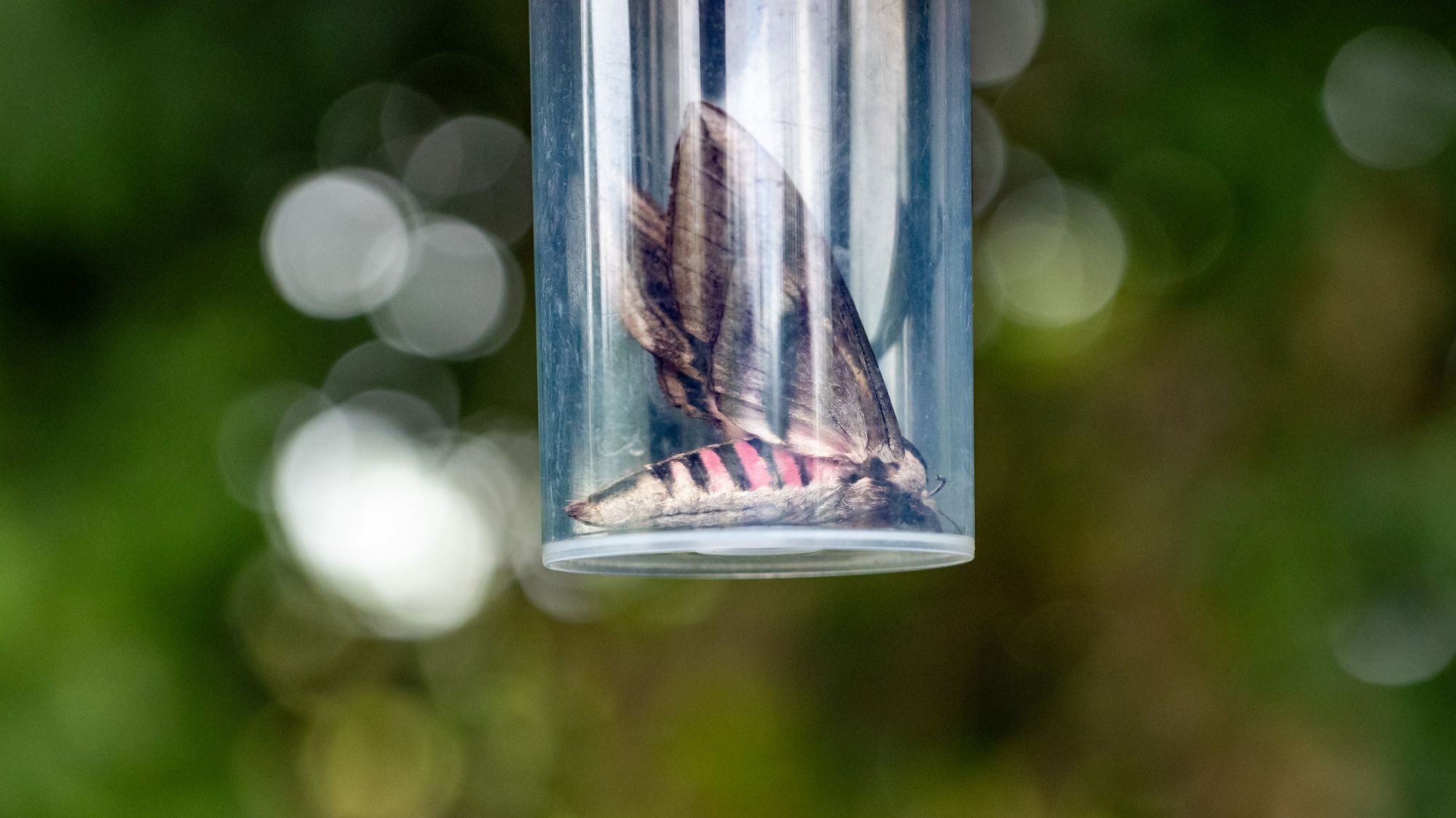
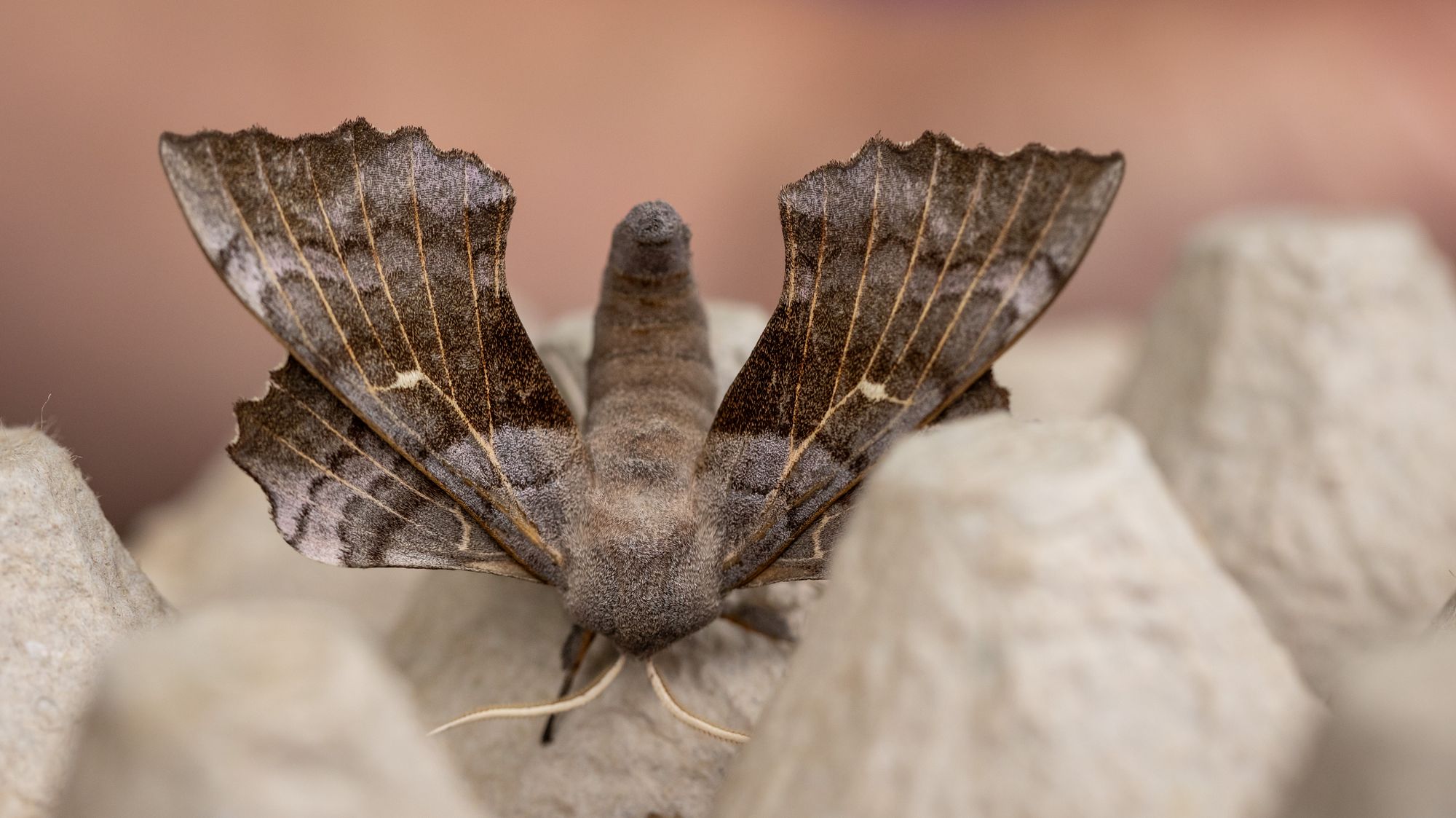
By all accounts, Coton Orchard is a special place. So why has its destruction been approved? The question comes down not to whether Coton Orchard is special, but whether it is special enough.
Orchards are peculiar habitats: their value depends, at least partly, upon human management.
The few remnants of England’s old orchards – or those tended in line with older practices – are known as “traditional orchards”. They are distinguished by their tall, wide-canopied fruit trees, planted at wide intervals on grassland that is either grazed by livestock or cut for hay, and managed without the use of chemicals. These are rare and special places, considered a priority habitat under the UK Biodiversity Action Plan – a designation which means they are promoted but not legally protected.
In contrast, intensively managed orchards are geared towards the maximum production of fruit, just as intensive arable farms pursue the maximum yield of wheat or barley. Trees are small and tightly packed, regularly pruned to remove dead and decaying wood, and treated with the whole gamut of pesticides, herbicides and fertilisers. While traditional orchards make the landscape a richer place, these intensively managed orchards are part of the problem.
Coton Orchard may have survived many of the challenges of the twentieth century, yet it did not emerge entirely unscathed. Today, it sits between these two categories; suspended somewhere between past and present.
Alongside its eleven original trees are hundreds of smaller specimens, more typical of an intensively managed orchard – although Anna stresses that her family has never treated any of the trees with pesticides and points out that many of these “young” trees are actually several decades old, some almost as old as the orchard itself, and contribute to the land's wealth of wildlife.
Still, the fact of their presence means that much of the site no longer meets the definition of a “traditional” orchard – something that has been seized upon by supporters of the busway.
“I think it is sad when people see row upon row of monoculture clones as natural,” said Labour councillor and busway supporter, Neil Shailer, at the meeting to approve the scheme's progression.
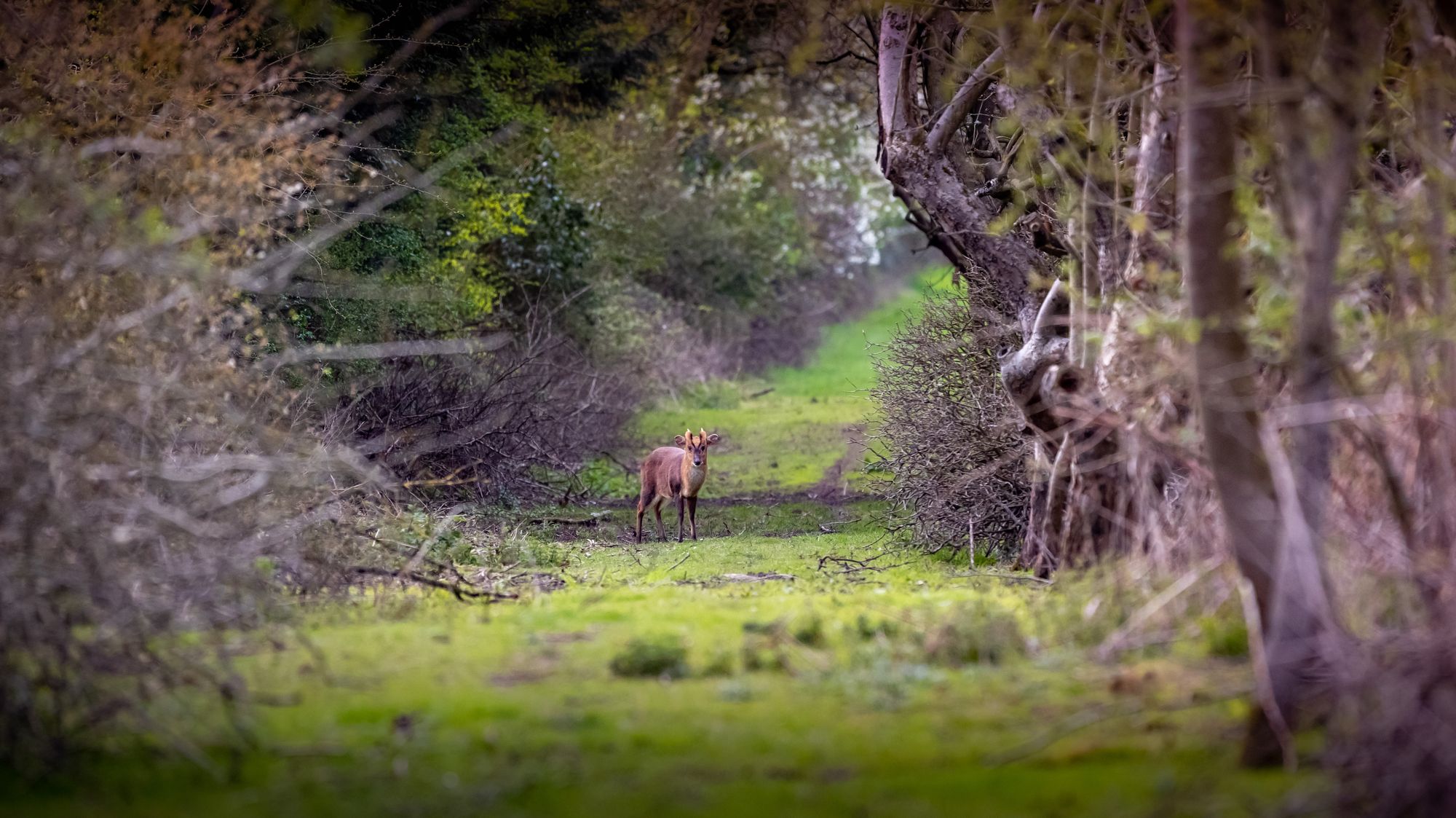
There are also questions over the value of the eleven oldest trees, six of which are located in the path of the proposed road.
Veteran trees, unlike priority habitats, are legally protected under the National Planning Policy Framework. It is a designation that depends not only upon age, but also cultural significance. However, the environmental impact statement for the road argues that, because their crowns were pruned in the past, the trees do not qualify for veteran status.
Steve Oram, orchard biodiversity officer at the People’s Trust for Endangered Species, disagrees. “Those Bramleys absolutely are veteran trees. On the weight of just one of those trees, it should be thrown out,” he says.
The final accusation levelled against the orchard is that some of it has been left to rewild. Today, a dense thicket covers around a third of the site – a tanglewood of alder, ash, oak, blackthorn, cherry and other species mingling with the apple trees. The scrub has been brilliant for wildlife, says Anna, but has devalued the orchard in the eyes of the developers.
Ultimately, does it matter whether or not the orchard is technically “traditional”? On paper, yes. But even the environmental impact assessment admits that years of low intensity management means that Coton Orchard “fulfils many of the ecological niches” of a bona fide traditional orchard.
“If anyone’s trying to claim it’s eight hectares of perfect traditional orchard – it isn’t. That’s not really disputable,” says Oram. “But it is eight hectares of uninterrupted habitat, and it has been for a long time.”
It is this continuity, he argues, that calls into question the other central claim of the busway’s developers: that the road will benefit the climate.
“Putting a road right through the middle of it not only fragments the habitat, it releases so much carbon from the soils because they haven’t been touched for so long," he adds.
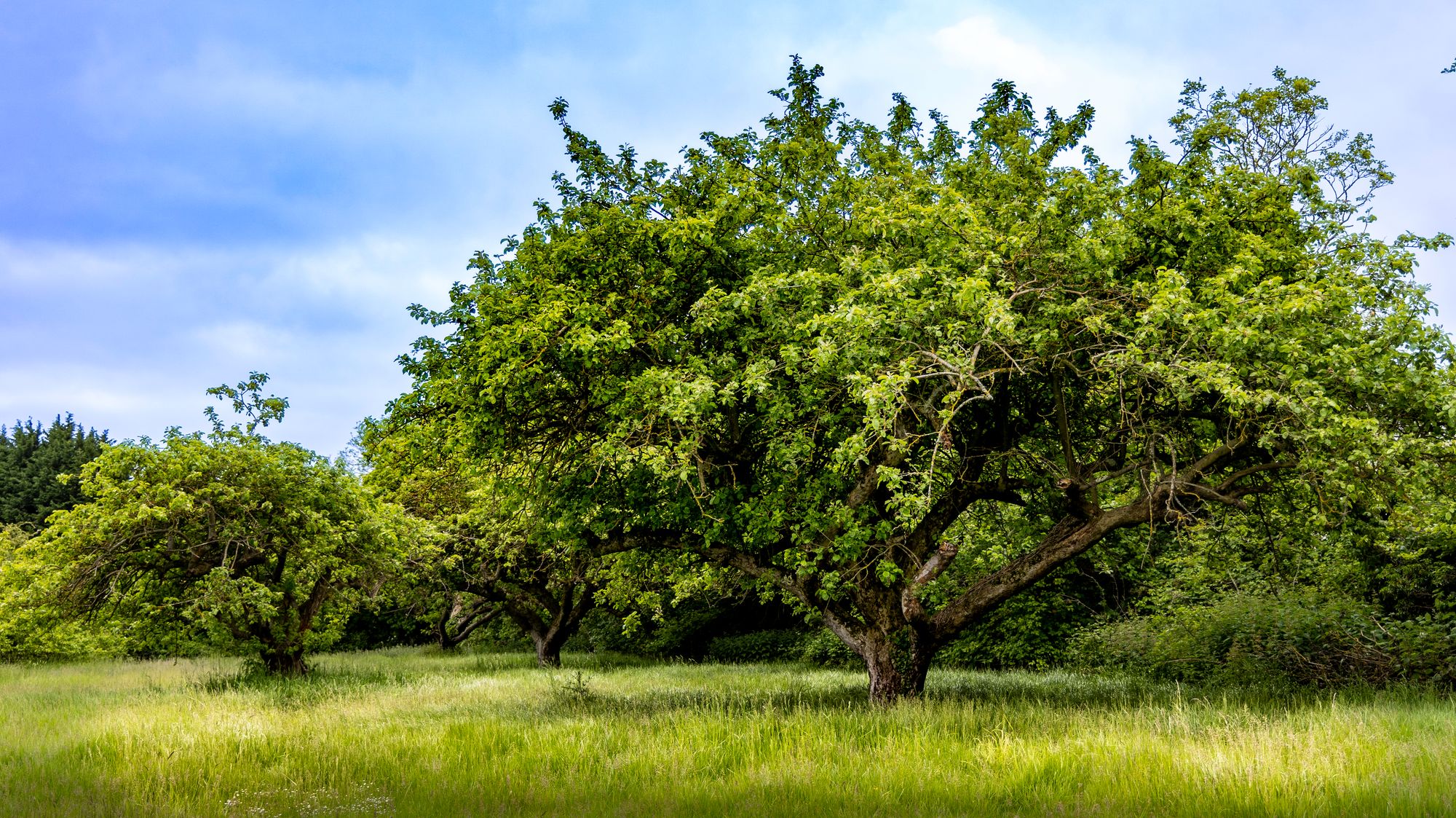
If Coton Orchard is nothing special then it is, according to the developers, ultimately replaceable.
As part of its goal of increasing biodiversity by 20 percent overall, the Greater Cambridge Partnership has pledged to plant around 1,500 new trees to compensate for those that will be lost in the orchard.
But opponents argue that these young trees cannot replace the rich and venerable ecosystems that exist today – at least, not in any meaningful sense. While the developers may put saplings in the ground, they cannot speed up time: the immature plantation will contain none of the cracks and crevices that make Coton Orchard so valuable for insects and bats.
Some are doubtful whether the planted trees will ever reach the ripe old age of the orchard’s centenarian Bramleys. Earlier this year, it emerged that more than half a million new trees, planted alongside the A14 between Cambridge and Huntingdon to offset those lost during an upgrade, had died in just three years.
“Because of the mobility of [mosses and liverworts], you could create another orchard without too much problem, in a way that you couldn’t create grassland or woodland habitat,” says Preston, the bryologist who surveyed the site. “On the other hand, if no one is doing that, then clearly one wants to hang onto the ones we’ve got.”
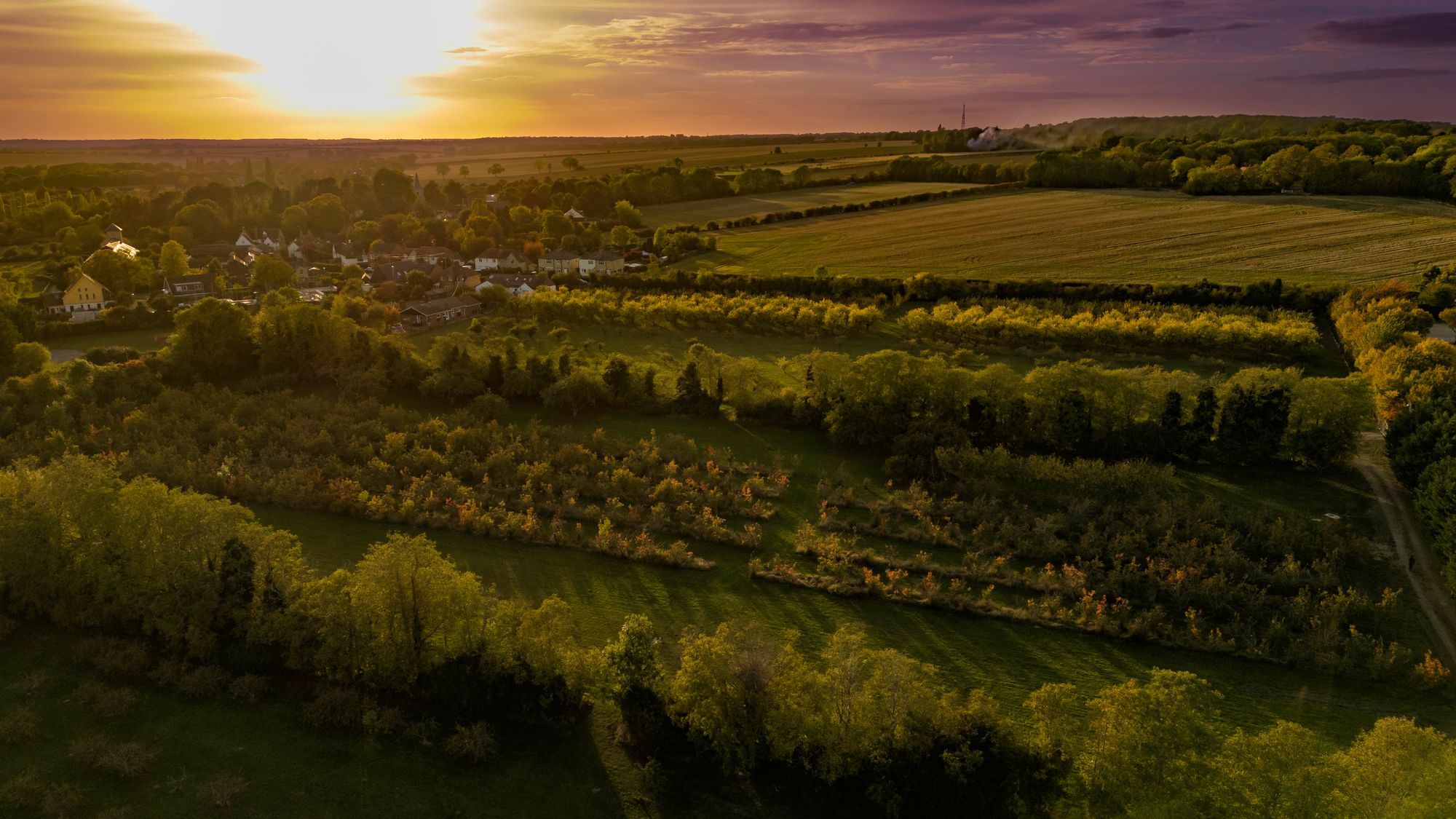
With the fragmentation of the orchard will also come more intangible losses – those that are rooted not in the natural world, but in memory, community and culture.
Hearing of the threat to Coton Orchard, Peter Rayner was compelled to write a letter to the Cambridge Independent. He had lived in the house overlooking the orchard during his childhood, during the years of the Second World War.
He remembered chatting with drivers from London, come to take the apples to Covent Garden, and anxious to get back before the bombs started dropped, and recalled the Jewish refugees – “learned men and women, academics who must have gravitated to Cambridge from troubled parts of Europe” – who camped among the trees.
“To see the orchard as a collection of trees is itself a flawed approach," he concluded. “It is and always has been part of the heritage aspects of Cambridge and the surrounding villages.”
Coton continues to serve its community today. Earlier this year, the orchard hosted its very first wassail – an ancient tradition designed to scare off malignant spirits and coax a fruitful harvest from the trees. Revellers recited a wassail song, composed by a local lecturer for the occasion, decked in long robes and flamboyant foliage: the kind of ceremony that lives in quiet and sacred spaces, not beneath the glare of street lamps and headlights.
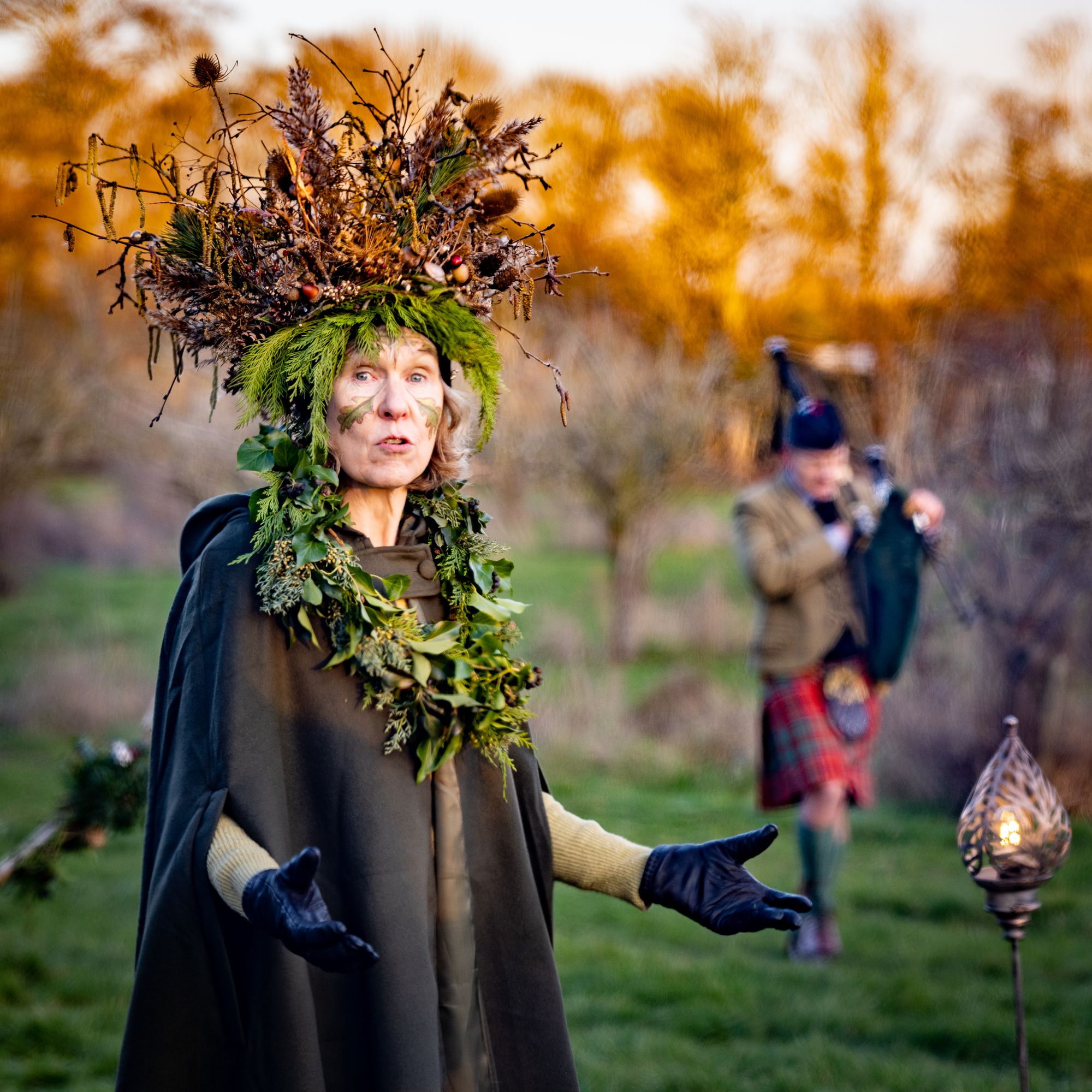
The battle over Coton Orchard is not one that easily pits heroes against villains. There are ardent environmentalists arguing for both sides.
If anything, it reveals the tensions that arise when attempting to tackle climate change, while also preserving the ragged patches of nature that cling on across the country. Counterintuitively, the two causes are not always easy bedfellows.
The loss of the orchard would be a tragedy: for the ancient trees that preside over its unploughed grasses, for the birds that feed upon its apples, for the people who have loved it in the past and who love it now.
But the real tragedy, perhaps, is that England's orchards have declined so steeply that so much hangs upon this small patch of land – a final relict of a habitat that was once an integral part of the country's food production and culture.
“What we are trying to get across to people is that this is really important stuff,” says Anna. “It's a little orchard, and it doesn't look like a great deal, but it could be the domino that tips over and causes untold problems somewhere else.”
All photographs belong to Anna Gazeley.
Subscribe to our newsletter
Members receive our premium weekly digest of nature news from across Britain.
Comments
Sign in or become a Inkcap Journal member to join the conversation.
Just enter your email below to get a log in link.

